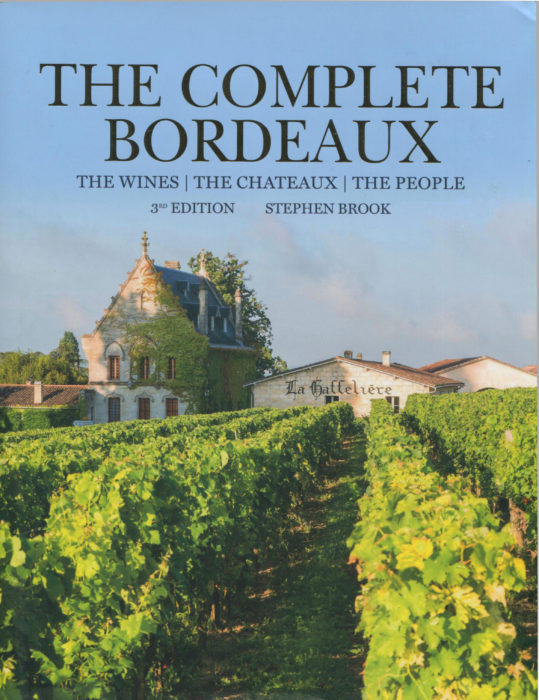
You may not know the name Stephen Brook off the tip of your tongue, but if you love wine, then you’ve probably read his words. He has several wine books and, in particular, has revised the latest editions of Hugh Johnson’s Wine Companion. His books include Sauternes, The Wines of Germany, and The Wines of California.
The Complete Bordeaux may be his signature work. This third edition is a serious update of the 2012 edition. How much can change in a mere five years? A significant amount because of the complexity inherent in this landscape. As Stephen writes:
Bordeaux is more than a wine. It is an interconnected universe of interest, all focusing the fate of millions of vines as they negotiate their way through an uncertain climate.
Bordeaux is big and small. Small because, being very generous, it is no more than 50 by 60 miles and only the diagonal of that rectangle is grape intensive. The southwest and northeast corners are vineyard free. Yet, in that little slice of France, there are over 13,000 wineries arrayed in 54 appellations. That enormity may explain why The Complete Bordeaux is over 700 pages long, very densely packed pages. This is simply a monumental book.
A total of 16 elegant maps are interspersed in the book to offer you a colorful tour of the total landscape and the individual regions. After an Introduction covering the history, the geography and the wine style of Bordeaux, there are six primary sections, each with multiple chapters, devoted to specific geographic areas of Bordeaux:
- The Left Bank: The Medoc
- The Left Bank: The Graves
- The Right Bank: St-Emilion
- The Right Bank: Pomerol
- Other Regions of Bordeaux
- Sweet Wines
What is the level of detail and design here? Let’s look at one of the St-Emilion chapters. First, there is a discussion of the local terroir: the weather, the soil, the impact on the grapes when the roots penetrate the soil and strike the underlining rock. How do the roots respond, how do they turn, how deep is the soil? Yes, that kind of detail.
Then Stephen describes many, although not all to be sure, of the wineries in the region. A part of a page or up to two pages presents:
- General info: phone, website, owner
- Appellation
- Size
- Grapes grown
- Production [bottle per year]
Those facts are followed by a description of the wine making technique and the factors that give this winery its notes of distinction. Stephen has been tasting these wines for decades and happily presents a discussion, for a specific winery, of how wines from the 60s and 70s and on compare. If you can purchase a 1987 bottle from Chateau Angelus, for example, you should for it remains “fully ready, leafy, rounded, and reasonably fresh.”
The insights into history, tastes, and changes go for page after page. This is a book that you won’t finish in one night. Perhaps not in one lifetime. The Complete Bordeaux is work of both wine and love. This new edition is the ultimate guide to perhaps the greatest wine area in the world. Whether you use the book in your local wine store or tote it on a journey to Bordeaux itself, this book is definitive. And magnificent.
